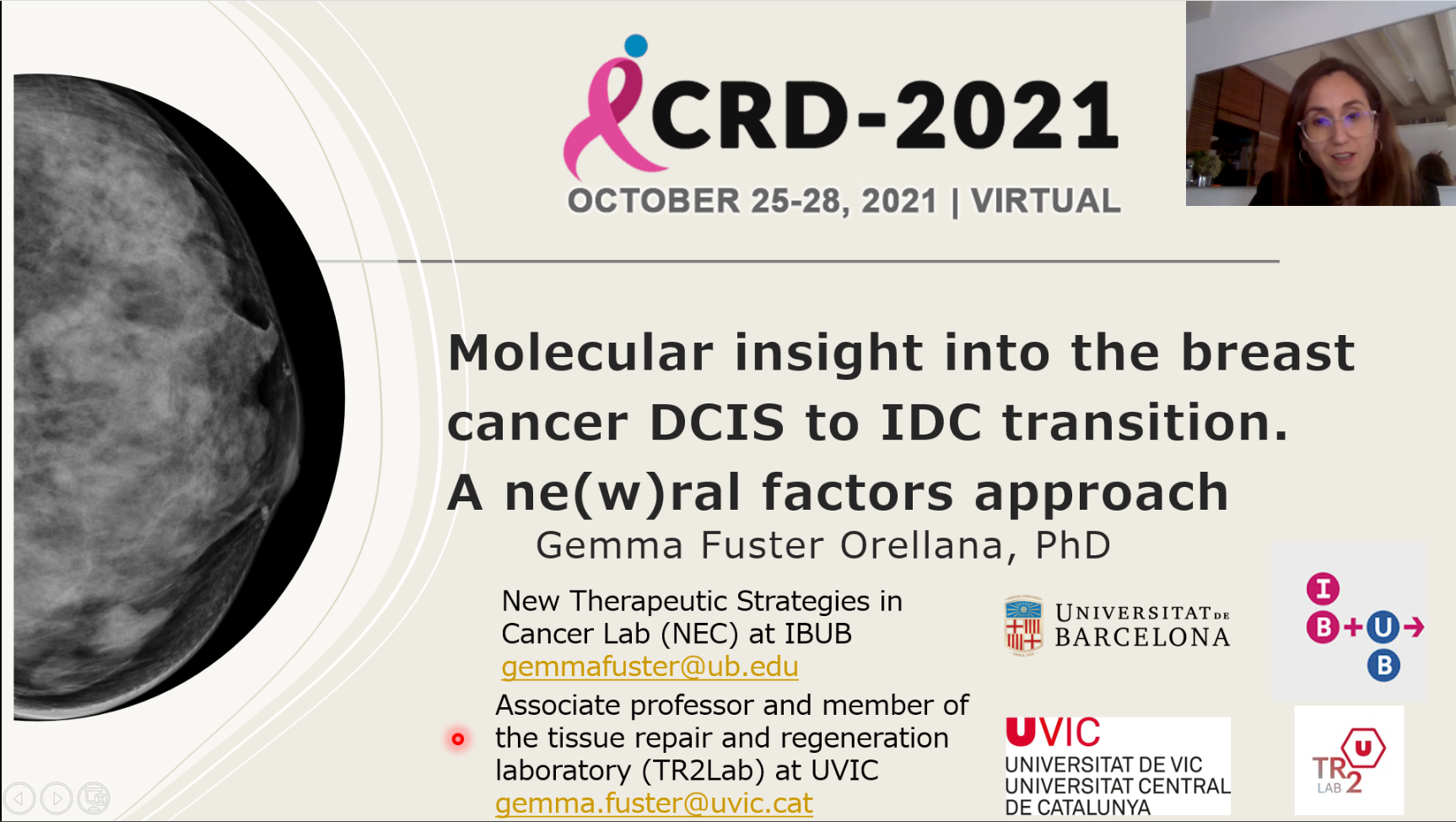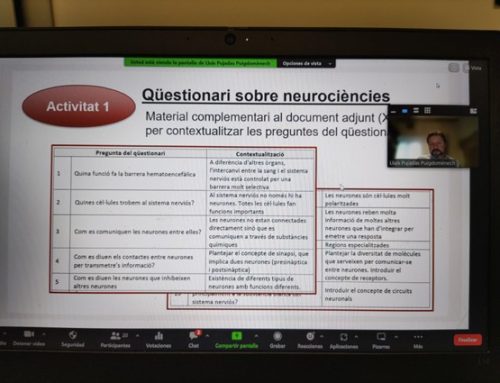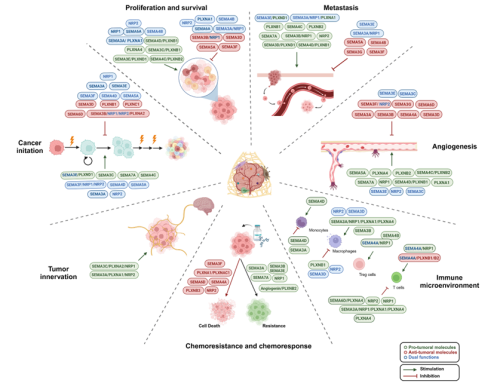
Very proud of Ph.D. Gemma Fuster, member of the line of tissue microenvironment and pathogenicity, by oral communication presented at CRD-2021 (Cancer Research Conference) celebrated on October between 25 and 28 of October of 2021.
Ph.D. Gemma Fuster presented a conference called “Molecular insight into the breast cancer DCIS to IDC transition. A ne(w)ral factors apporach”.
In this communication, she explained their last research news about the molecular knowledge of the most frequent breast cancer pre-invasive lesion, referred as ductal carcinoma in situ (DCIS). The major biomedical challenge in the most breast cancer pre-invasive lesion (DCIS) is to identify those patients at high risk of progression to invasive ductal carcinoma (IDC) who should be treated. Therefore, our data provided clear evidence that an axonal guidance molecule, semaphorin 3F and its receptors neuropilin 1 and neuropilin 2, previously involved in invasive breast cancer subtypes prognosis, are implicated in fostering DCIS to IDC transition in BC, through the induction of EMT process in epithelial cells and consequently enhancing migration and invasion. Moreover, SEMA3F exerts some important effects on myoepithelial cells challenging their role as tumor suppressor cells. DCIS and IDC BC clinical data of SEMA3F, and its co-receptors NRP1 and NRP2 validated as poor prognosis markers to invasiveness in DCIS patients, and as possible therapeutical approaches to maintain low-risk stability of the pre-invasive BC lesions.












Leave a Reply